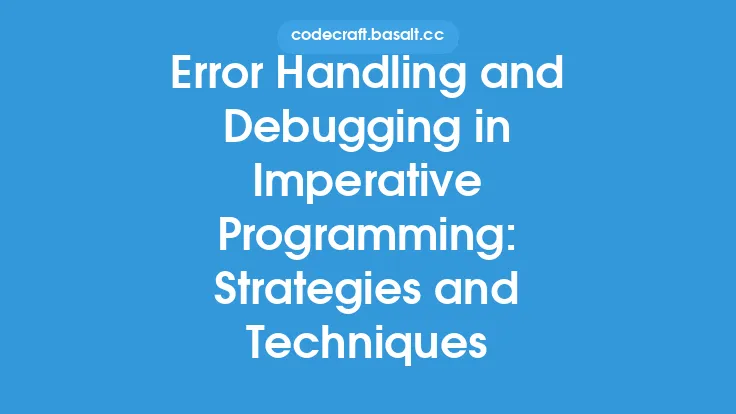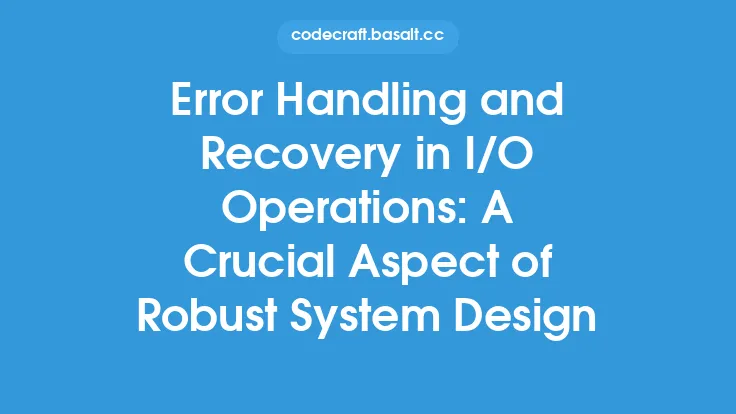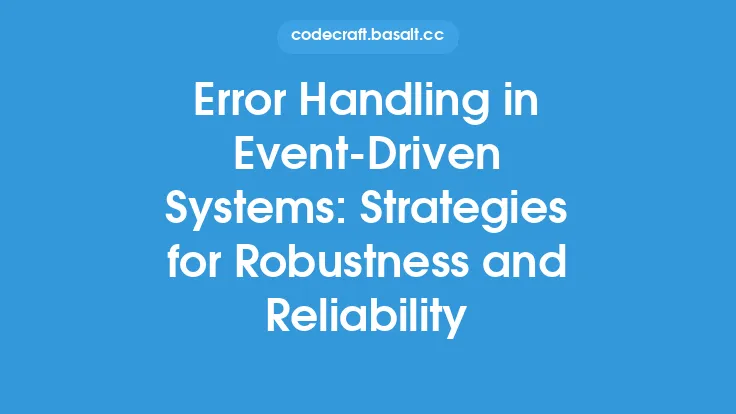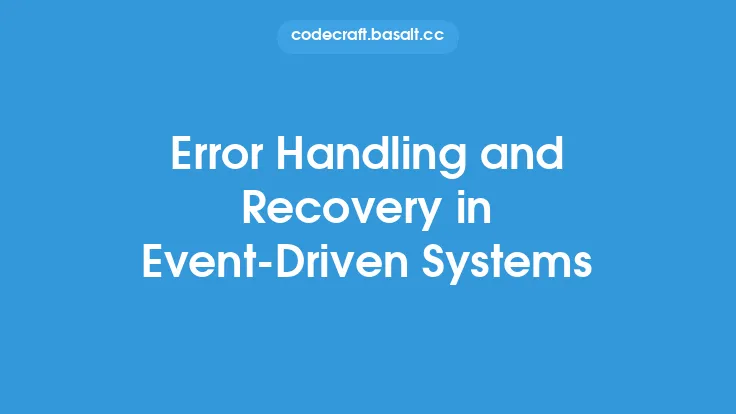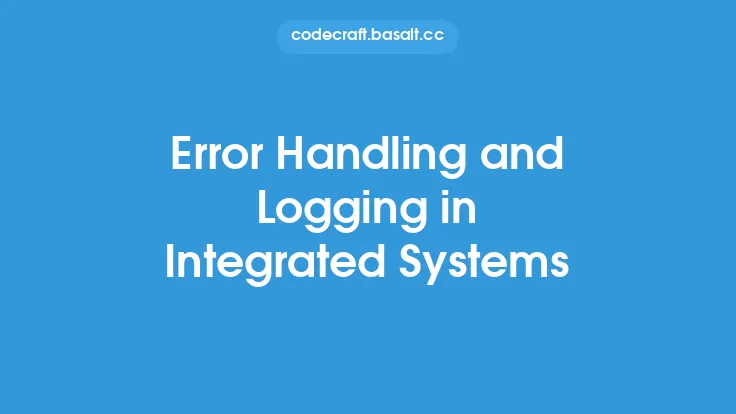Error handling and debugging are crucial aspects of API design that ensure a robust and reliable interaction between systems. When designing an API, it's essential to consider how errors will be handled and how debugging will be facilitated to minimize downtime and improve overall user experience. In this article, we'll delve into the world of error handling and debugging in API design, exploring the concepts, techniques, and best practices that will help you create a resilient and maintainable API.
Introduction to Error Handling
Error handling is the process of anticipating, detecting, and responding to errors that may occur during API interactions. Errors can arise from various sources, including invalid user input, network failures, database errors, or bugs in the API implementation. A well-designed error handling mechanism helps to prevent errors from propagating and causing further damage, ensuring that the API remains stable and functional even in the face of adversity. There are several key considerations when designing an error handling system, including error classification, error reporting, and error recovery.
Error Classification and Reporting
Error classification involves categorizing errors into different types, such as syntax errors, validation errors, or runtime errors. This helps to identify the root cause of the error and determine the appropriate response. Error reporting, on the other hand, involves providing detailed information about the error, including the error message, error code, and any relevant context. This information is essential for debugging and troubleshooting purposes. When designing an error reporting system, it's essential to strike a balance between providing too much information and not enough. Too much information can be overwhelming, while too little information can make it difficult to diagnose the issue.
Error Recovery and Retry Mechanisms
Error recovery involves taking corrective action to recover from an error and restore the API to a stable state. This can include retrying failed operations, rolling back transactions, or compensating for lost data. Retry mechanisms are an essential part of error recovery, as they allow the API to automatically retry failed operations and minimize downtime. However, retry mechanisms must be designed carefully to avoid exacerbating the problem. For example, if an API is experiencing a high volume of errors due to a network issue, retrying the operation repeatedly can overwhelm the network and make the situation worse.
Debugging Techniques and Tools
Debugging is the process of identifying and fixing errors in the API implementation. There are several debugging techniques and tools available, including logging, tracing, and debugging frameworks. Logging involves recording detailed information about API interactions, including requests, responses, and errors. This information can be used to diagnose issues and identify patterns. Tracing involves tracking the flow of requests and responses through the API, allowing developers to identify where errors are occurring. Debugging frameworks, such as Postman or cURL, provide a range of tools and features for testing and debugging APIs, including support for HTTP requests, response analysis, and error handling.
Best Practices for Error Handling and Debugging
There are several best practices for error handling and debugging that can help ensure a robust and reliable API. These include:
- Providing detailed and consistent error messages
- Using standard error codes and formats
- Implementing retry mechanisms and error recovery strategies
- Using logging and tracing to diagnose issues
- Testing and validating error handling and debugging mechanisms
- Documenting error handling and debugging procedures
- Continuously monitoring and improving error handling and debugging mechanisms
Designing for Error Handling and Debugging
When designing an API, it's essential to consider error handling and debugging from the outset. This involves designing the API to be resilient and fault-tolerant, with built-in mechanisms for error detection, reporting, and recovery. It also involves selecting the right tools and technologies for error handling and debugging, such as logging frameworks and debugging libraries. Additionally, it's essential to consider the user experience and provide clear and concise error messages that help users diagnose and resolve issues.
Common Error Handling and Debugging Challenges
There are several common challenges that API designers and developers face when implementing error handling and debugging mechanisms. These include:
- Balancing error handling with performance and scalability
- Handling errors in distributed systems
- Dealing with errors that occur outside of the API's control
- Providing meaningful error messages and context
- Debugging issues that occur in production environments
- Ensuring consistency and standardization across error handling and debugging mechanisms
Future Directions and Emerging Trends
The field of error handling and debugging is constantly evolving, with new technologies and techniques emerging all the time. Some of the future directions and emerging trends in error handling and debugging include:
- The use of artificial intelligence and machine learning to detect and diagnose errors
- The adoption of cloud-native and serverless architectures, which require new approaches to error handling and debugging
- The increasing importance of security and compliance in error handling and debugging
- The use of observability and monitoring tools to gain insights into API behavior and performance
- The development of new error handling and debugging standards and protocols, such as HTTP/2 and gRPC.
Conclusion
Error handling and debugging are critical components of API design that require careful consideration and planning. By understanding the concepts, techniques, and best practices outlined in this article, API designers and developers can create robust and reliable APIs that provide a high-quality user experience. Whether you're building a new API or maintaining an existing one, error handling and debugging are essential skills that will help you ensure the stability, scalability, and performance of your API.
